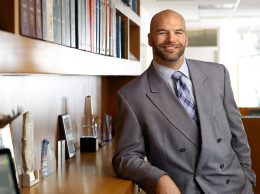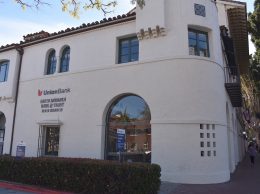Guest op/ed: Understanding crime insurance for ‘rogue employee’ losses
By David E. Wood on September 30, 2011
Financial services companies, from banks to private equity firms, have never been more vulnerable to catastrophic losses caused by dishonest employees and employees duped by dishonest third parties. We live in a time of monumental risks and monumental losses.
The recent UBS announcement of a $2 billion trading loss caused by “rogue employee” Kweku Adoboli would have caused considerably more uproar just a generation ago. Ponzi schemes date back to the 19th century (Charles Ponzi coined the expression by stealing $7 million in 1920, but William “520%” Miller invented the scheme in 1899), but few in the 19th century or even the 20th century could have foreseen a Bernard Madoff, who cheated investors out of a record $65 billion. These losses make the $1.3 billion that Nick Leeson cost England’s Barings Bank in 1995 look like bus fare.
When banks and financial services companies have to come out of pocket for major losses involving someone’s dishonesty, they struggle to protect their brands — not wanting to look stupid to their clients and competitors — some heads roll, and shareholders lose equity.
In the midst of the crisis, someone will ask whether the company’s crime insurance policy covers the loss. The frustratingly vague answer is “it depends.” Was it an inside job committed by a dishonest employee? Was staff duped by some dishonest third party? Was a crime committed, and if so, what crime? (Remember that criminal conduct is defined differently in in other countries. Causing a car accident in Mexico, drunk or sober, is a crime.)
Given the unprecedented risks inherent in today’s financial markets, financial institutions and financial service firms need and deserve a clear answer to this $64 question.
Since the Great Depression, when America first realized that bank failures often traced back to employee dishonesty, federal regulations have required banks to buy employee dishonesty insurance. Buying such coverage in all sectors of the financial services industry has become standard practice even when not required by regulation. A financial services company that does not have a fidelity bond or a commercial crime policy would have trouble attracting investors.
But fidelity bonds and commercial crime policies often have trading loss exclusions, eliminating coverage for any loss caused by trading, directly or indirectly. This exclusion usually does not apply to employee dishonesty coverage, but what if a financial services company has been tricked into aiding and abetting a fraud perpetrated by someone it does not employ? What if the UBS “rogue employee” turns out to have been executing trades intending to benefit the bank, but was himself duped by a counterparty or some other person not employed by the bank? In short, what if the corporate victim cannot prove that its employee was the author of a fraud triggering its employee dishonesty coverage? Will its fidelity bond or commercial crime policy respond to a staggering hit to its bottom line?
As fidelity and commercial crime claims adjusters are quick to remind us, the avenues for recovering a loss caused by a dishonest third party under a crime policy are very limited. If a bank robber steals money from the vault, the loss is covered. But if a more sophisticated thief steals money through a trading program sanctioned by a financial institution or financial services company, the bonding or insurance company may well push back. Whether the fidelity or crime insurance carrier ultimately pays the loss may depend on how friendly the court hearing the coverage litigation is to insurance companies.
In such a dispute, the judge may have to decide whether the fraud was caused directly or indirectly by trading. In coverage litigation brought by the second largest victim of Madoff against its crime insurers, the court held that the loss was not caused even indirectly by trading — it was caused by a thief who told the insured he was trading, when in fact he was simply pocketing some of the money and using the rest to create the impression that he was paying healthy returns to existing investors.
But in other cases, courts have not been so forgiving to policyholders, and have held that comparable schemes involving at least some modicum of actual trading are excluded under fidelity and crime coverage.
Based on press accounts, UBS probably can prove that rogue employee Adoboli acted dishonestly, and was not just trying to get ahead at the bank by making riskier-than-normal trades for his and his employer’s mutual benefit.
If so, then the trading exclusion that is likely part of UBS’ crime policy should not eliminate coverage for its loss. But if Adoboli unwittingly helped some third party to perpetrate a fraud in which trading was even a scant causal factor, watch out — UBS may be covering this $2 billion loss from its own assets.
• David E. Wood is a shareholder at Ventura-based Anderson Kill Wood & Bender, P.C. and was the co-founder of Wood & Bender LLP, one of the country’s leading law firms specializing in insurance policy enforcement. Contact him at [email protected].











